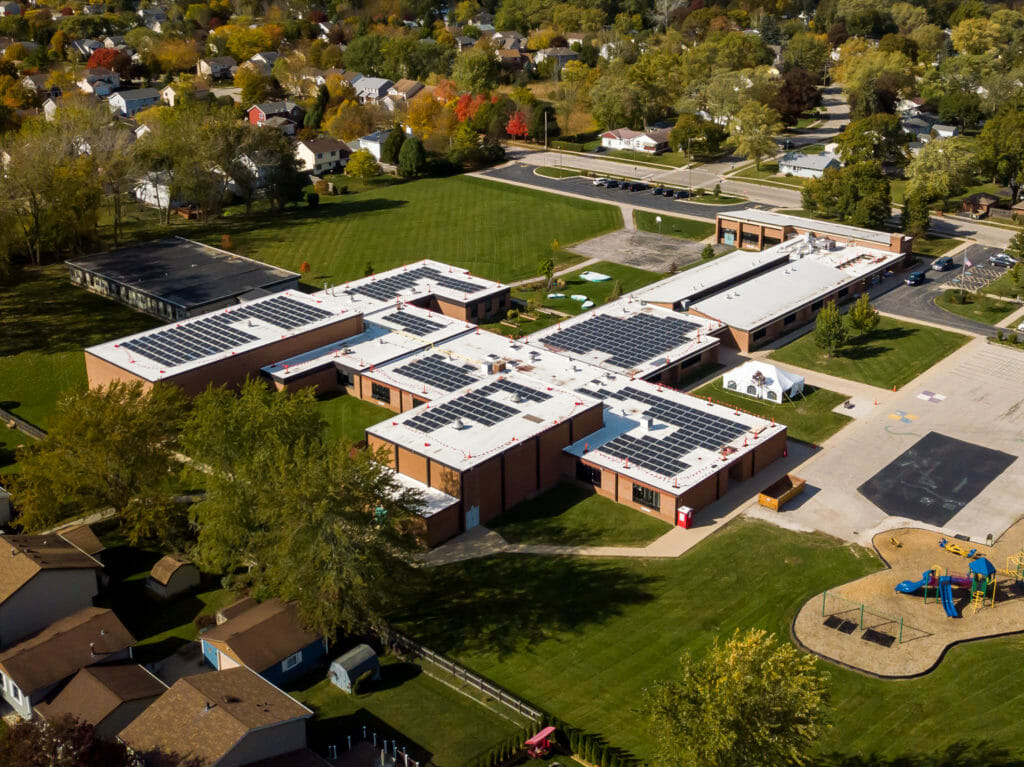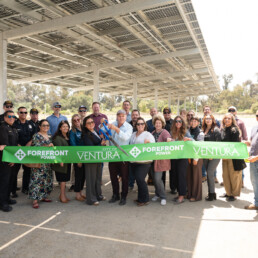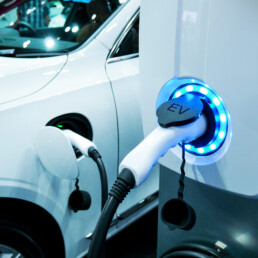U.S. Secretary of Energy, Jennifer M. Granholm, called it an example of “just what bold state-level action can do to usher in the clean energy future.”
On September 15, 2021, Governor of Illinois, J.B. Pritzker, signed into law SB 2408, the Climate and Equitable Jobs Act, which provides funding mechanisms to take the state from the current day levels of 9% renewable energy up to 40% by 2030 and up to 50% renewables by 2040. This requires the state to build 3.5 times more renewable energy each year.
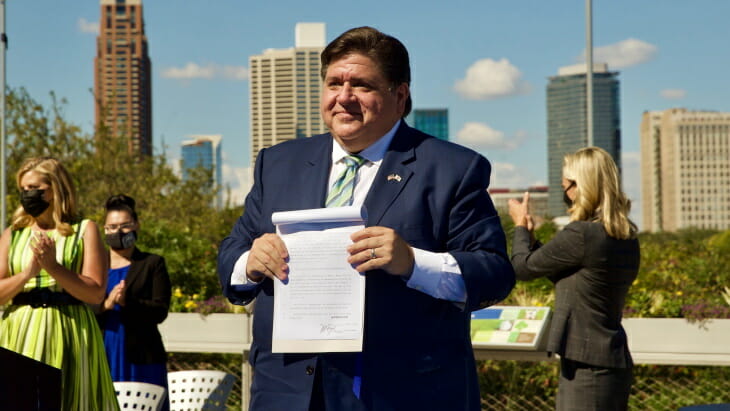
On December 14, 2021, the Illinois Power Agency (IPA) reopened the Adjustable Block Program (ABP), opening the queue for new renewable energy projects to be considered for the first time in two years since the initial round of funding for renewable energy projects was exhausted.
After two years and a lot of legislative back-and-forth, the state of Illinois is again open for business, providing businesses, school districts, governments, and more with the opportunity to recuperate money normally spent on their electricity bills through investments in solar, energy storage, and other renewables.
The most lucrative incentives will be depleted first, so entities that start the process sooner will secure the most optimal savings rates.
What does this mean for potential buyers of renewable energy?
The initial iteration of the Adjustable Block Program (ABP), aka “Illinois Shines,” opened for applications starting Jan 31, 2019. Schools, municipalities, businesses, and other entities that took swift action were able to achieve substantial savings through adopting solar energy. (See below examples.)
Unfortunately, the program was oversubscribed at its opening in February 2019. This led to a lottery for the scores of projects that were able to secure their place in the queue, leaving many potential projects on standby and many businesses and public agencies with no near-term path to invest in renewable energy.
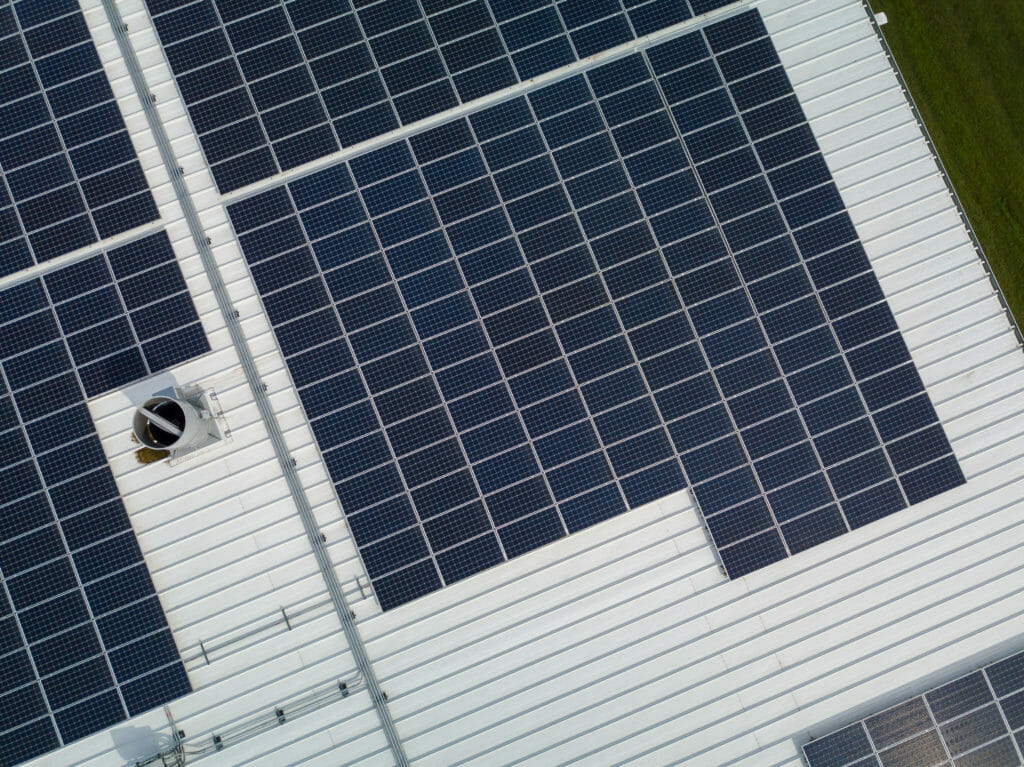
Between that closure up until CEJA was signed into law a few months ago, opportunities for new installations of renewable energy in the state had been extremely limited.
With the sweeping legislation signed into law in September that Governor Pritzker referred to as a “giant leap forward” for the state, there is now room for over 140 megawatts (MW) of new solar energy for large consumers* of electricity in addition to new incentives for battery storage in the state.
*“Large consumers” are defined as entities that install system sizes between 50 kilowatts (kW) and 5 megawatts (MW). This 5-MW cap has been increased from the former 2-MW cap in the 2019 iteration of the ABP. Schools have their own specific carve-out, though our energy experts would work with educational districts to be placed in the most lucrative block.
What types of financial savings could organizations expect from Illinois solar energy incentives?
Following the passage of the CEJA, solar energy rates in Illinois can be as low as $.03-$.04 per kilowatt-hour (kWh) depending on a variety of factors including site location, size, energy usage, and more. This rate would equal some of the cheapest electricity in the nation. The most forward-looking organizations with any type of footprint in Illinois are suddenly investigating the financial opportunity that renewable energy unlocks for their bottom line.
With these incentives, solar energy rates could end up being as low as $.03-$.04 per kilowatt-hour—among the cheapest in the nation.
In 2019, ForeFront Power helped customers take swift action to secure their place in the queue, and the resulting savings achieved have been noteworthy.
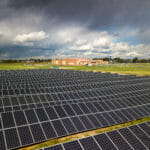
The Huntley School District 158, located 30 miles northwest of Chicago, installed 15,100 ground-mounted solar panels as part of a 5.5 MW system. This system is projected to offset 12.3 million pounds of carbon emissions and is estimated to result in several million dollars of utility bill savings over the 20-year contract period. Hear directly from the District Chief Financial Officer, Mark Altmayer, in this video on what this level of savings means for his district.
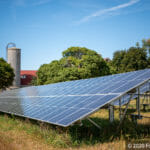
Located in Kane County, the Mooseheart Child City & School completed a 2.8 megawatt ground-mounted facility earlier this year, and estimates show the organization saving $2.6 million from the investment. “With the money saved over the next 25 years of the solar project’s life, we’ll be able to reinvest those dollars into other programs in order to better serve our youth,” said executive director of Mooseheart, Gary Urwiler.

In addition to ground-mounted solar systems, ForeFront Power has worked with organizations to install rooftop facilities in Illinois to help achieve financial savings as well.
Note: While the upcoming schools block promises roughly the same savings as it did in 2019, the large distributed generation block can expect incentives to be approximately 4% lower due to newer requirements such as payment of prevailing wage to installers and longer-term revenue payout periods (7 years versus the former 5-year period). With that said, the savings are still quite lucrative for organizations that can take advantage of them.
What does this bill mean for energy storage?
For the first time in the state’s history, energy storage at the commercial and industrial scale may pencil with the passage of CEJA. Battery storage may make financial sense for organization with spikes in energy usage, as savings occurs when these “peaks” in use of electricity from the grid are shaved by smart deployment of on-site batteries. Additionally, it may provide options for resiliency for organizations looking to use a microgrid to protect against power outages resulting from extreme weather such as recent polar vortex events.

For the installation of battery storage projects, utilities will be required to offer rebates equaling:
- $250/kWh of installed capacity for storage paired with distributed generation to customers that are not eligible for net metering
- $300/kWh of installed capacity to customers that are eligible for net metering
ForeFront Power’s energy experts analyze the battery storage potential for every site where solar is being considered in order to maximize savings and to meet the unique needs of each customer.
What will my organization need to get on the IPA’s waitlist?
This application packet includes several components that a seasoned development partner such as ForeFront Power can help your organization put together in an expedited fashion:
- Approved interconnection agreement (not to be confused with the application)
- In order to apply for this agreement, all projects must be proposed and accepted by the IPA.
- Proof of site control (energy services agreement or site license)
- Non-ministerial permits, such as electrical/building permits
- Etc.
- Approved interconnection agreement (not to be confused with the application)
The Adjustable Block Program works on a waitlist that is first-come, first-served. Entities across the state are starting to actively book their places in the queue.
What are the timing considerations?
The queue in each ABP “block” or category (schools, equity, community solar, small distributed generation, large distributed generation, etc.) is first-come, first-served. The approach we’ve seen work best in these scenarios is to hurry up and wait. Submitting in winter 2022 will increase the chances that your organization can begin saving within the next 2-3 years.
With energy prices potentially as low as $0.03-$0.04 per kilowatt-hour and all kinds of workforce development initiatives related to clean energy investment, getting in front of others looking into these opportunities is one of the best ways to achieve nearer-term savings. Illinois is a market that many organizations with a footprint in Illinois are now seeing as an opportunity to save through investments clean, on-site energy. If you’re curious what the savings potential is for your organization, a quick consult with one of our energy experts is a perfect place to begin.
Don’t hesitate to email us or reach out via the below link if you’d like assistance analyzing such an opportunity for your organization.
Interested in learning more?
We would love to discuss how our solutions might be a fit for your organization. Contact one of our solar, storage, or e-mobility experts today:


